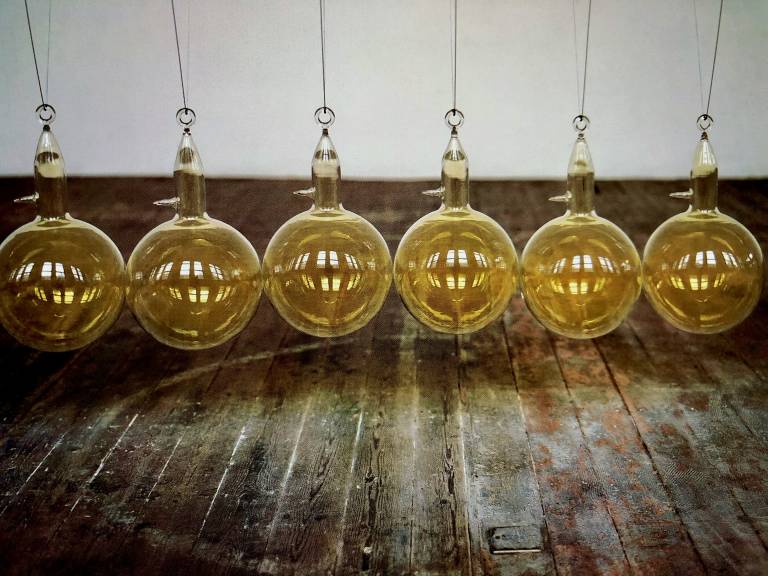Hamad Butt: Climates of Fear
01 March 2023, 4:30 pm–6:30 pm

This event is free.
Event Information
Open to
- All
Availability
- Yes
Cost
- Free
Organiser
-
Queenie Lee – History of Art
Location
-
South Wing Institute of Advanced StudiesRoom G11IAS Common Ground in South WingLondonEC2Y 8HDUnited Kingdom
Between 1990 and his AIDS-related death in 1994 aged 32, Hamad Butt made a series of pioneering sculptural installations: glass books that burn the retina if stared at unprotected; a cradle of glass capsules filled with deadly chlorine gas; fragile tubes of liquid bromine bowed to resemble an Islamic arch or minaret; a ladder of heated vials that release toxic iodine vapours if climbed; and a cabinet of live fly pupae that feed on printed texts to bloom into cycles of birth and death in miniature. Butt’s attraction to transformation, danger and death, and the industrially sourced base materials of his key works, brought art and science urgently to bear upon each other in the time of AIDS, and were informed by his passions for ‘pure’ science and the disputed para-science of alchemy – reclaiming in part the latter’s Islamic history, an epistemology of the South. Aesthetically austere yet solicitous, his was an art of seductive contradictions: of pleasure and repulsion, fear and apprehension, threat and quarantine, hermeticism and recognition, impersonality and disclosure. How might these contradictions speak, though obliquely, to Butt’s identity as British South Asian, Muslim, HIV-positive, and queer? I propose that Butt inserts his own experience into British stories of art, identity, survival and loss in a time in which he did not otherwise find himself represented; yet, in his difficulty and ambivalence, he also claims what Édouard Glissant calls the dispossessed subject’s ‘right to opacity’. I study his explorations of sublimation (the passage from solid matter to gas, or body to spirit, sublimity), familiars (intimate/supernatural), and apprehension (anxiety or fear, holding/being held, understanding/being understood); and his neologisms ‘sublimission’ (sublimation/submission) and ‘metachemics’ (a chemical metaphysics), perhaps to recover Butt’s difficulty, his remoteness, and his difference.
About the Speaker
Dominic Johnson
Professor of Performance and Visual Culture in the Department of Drama at Queen Mary University of London
Dominic Johnson is Professor of Performance and Visual Culture in the Department of Drama at Queen Mary University of London, and Head of Department. He is the author of four monographs including most recently Unlimited Action: The Performance of Extremity in the 1970s (2019). He is also the editor of five books including Pleading in the Blood: The Art and Performances of Ron Athey (2013); and (with Deirdre Heddon) It’s All Allowed: The Performances of Adrian Howells (2016), which was awarded the Annual Prize for Editing from TaPRA, the Theatre and Performance Research Association. His essays have been published in Art History, Art Journal, Porn Studies, TSQ: Transgender Studies Quarterly, Contemporary Theatre Review and elsewhere; and he is a frequent contributor to Art Monthly.
 Close
Close

